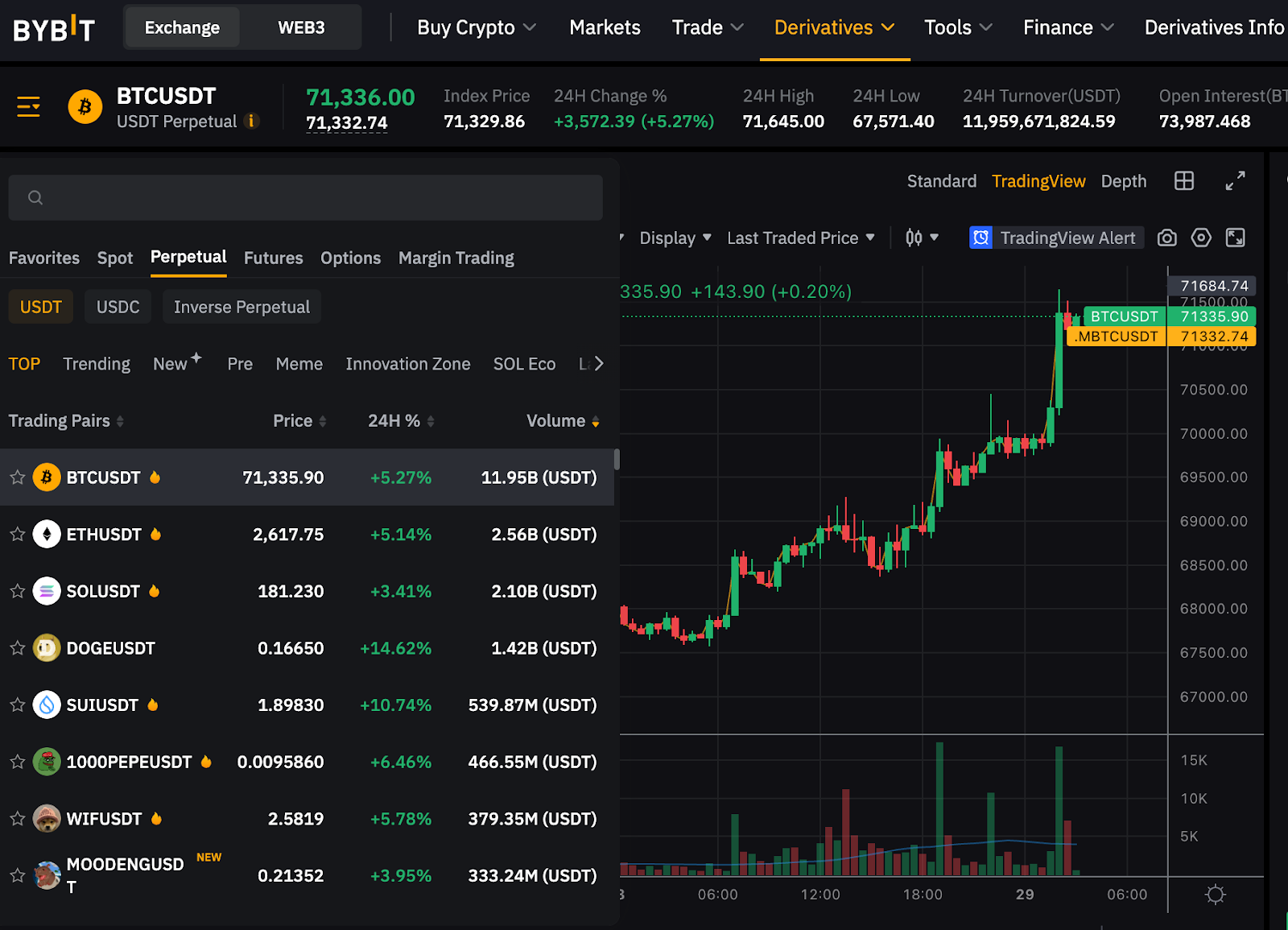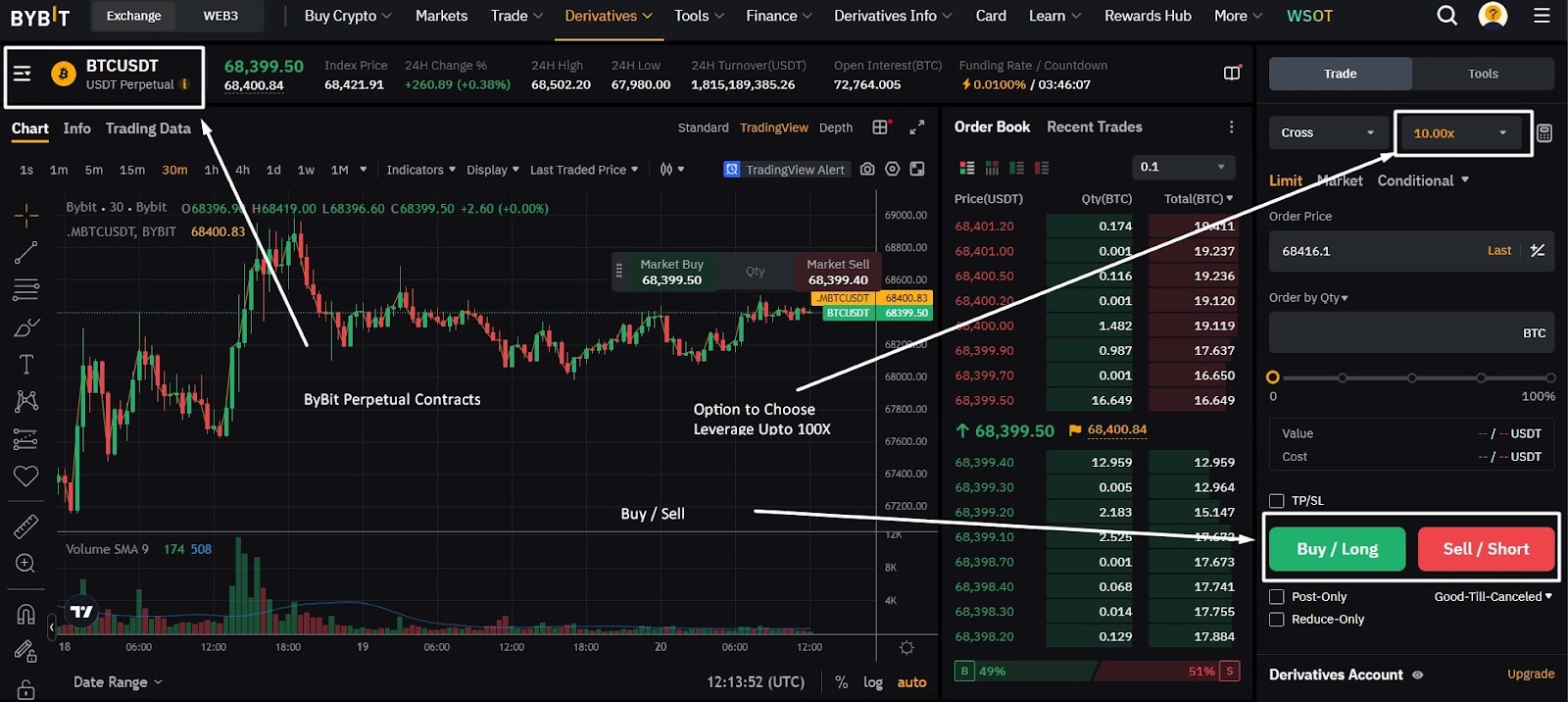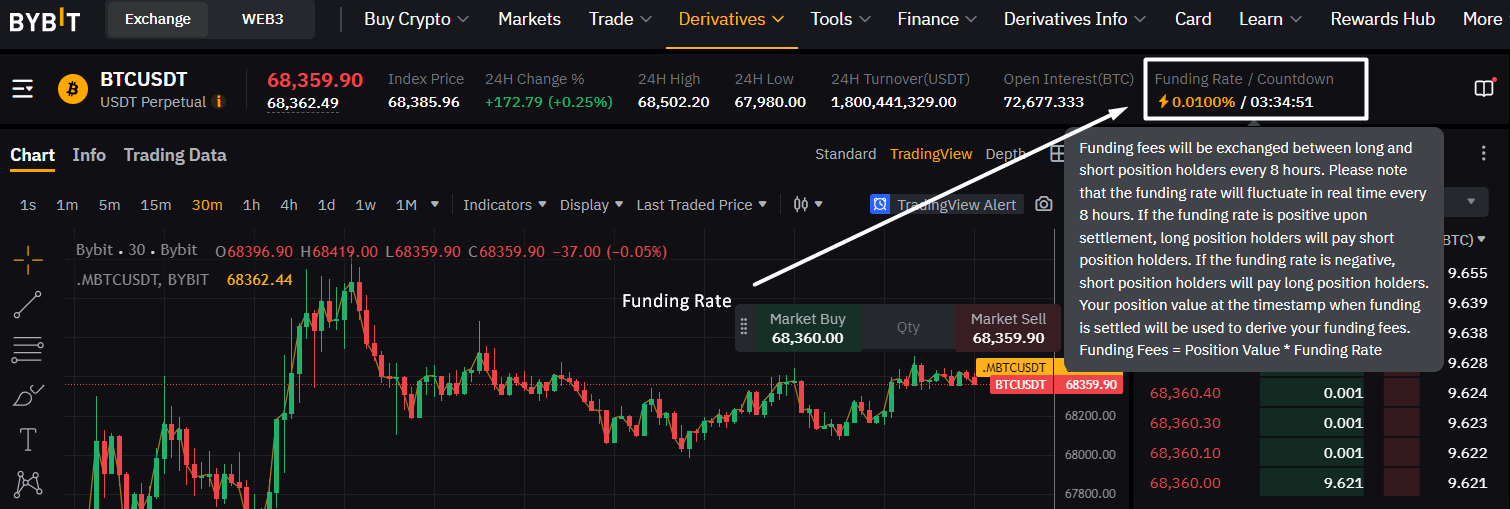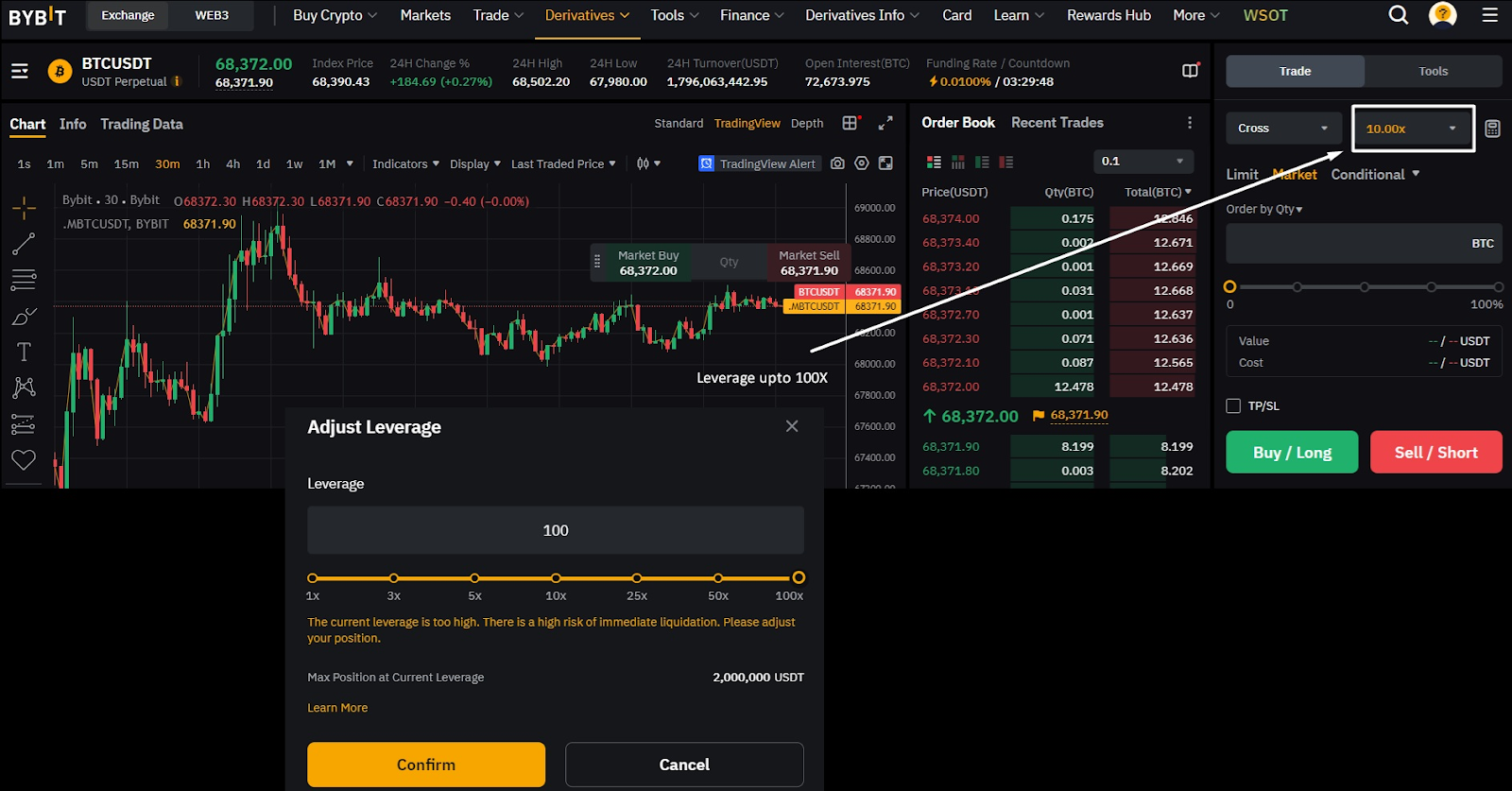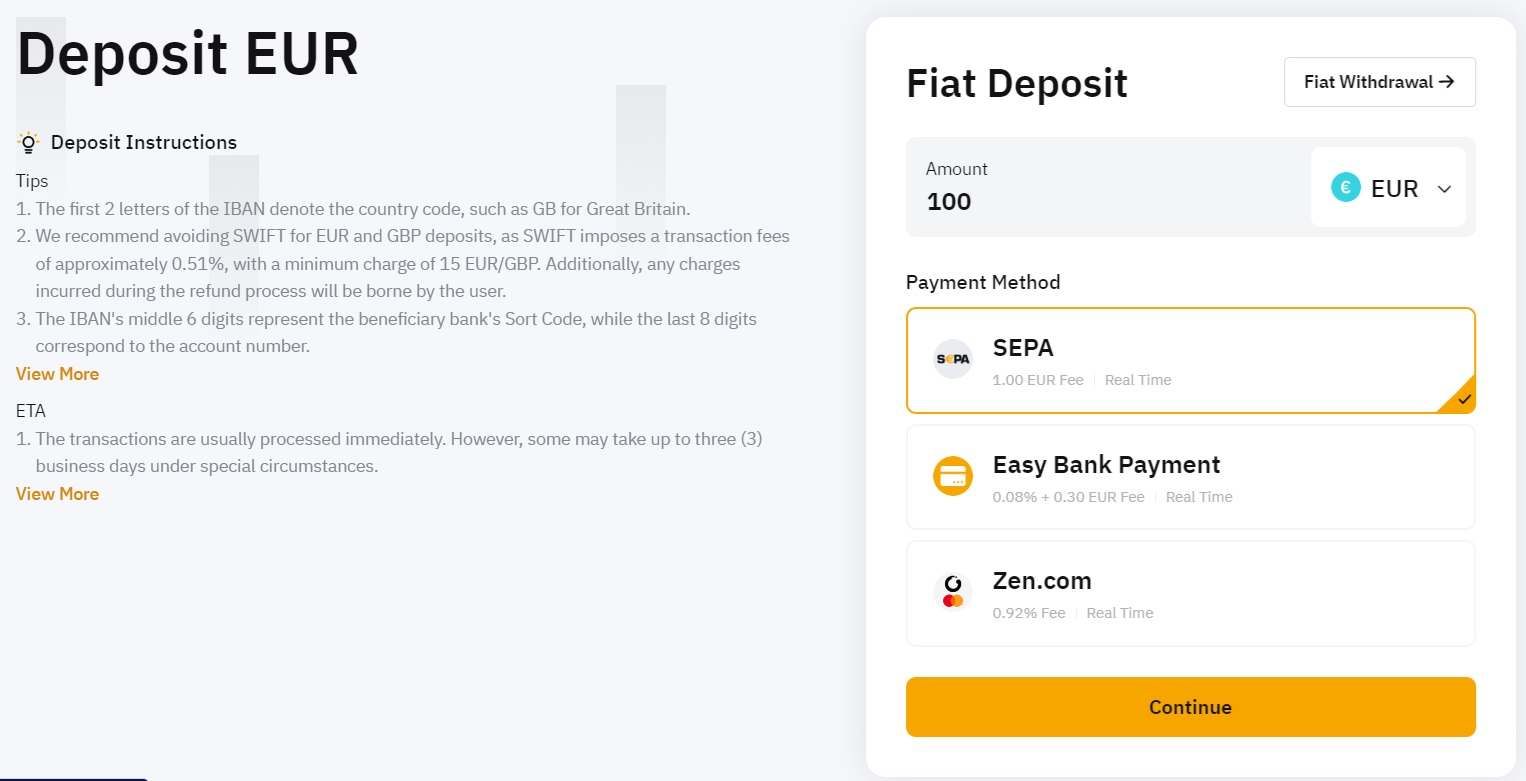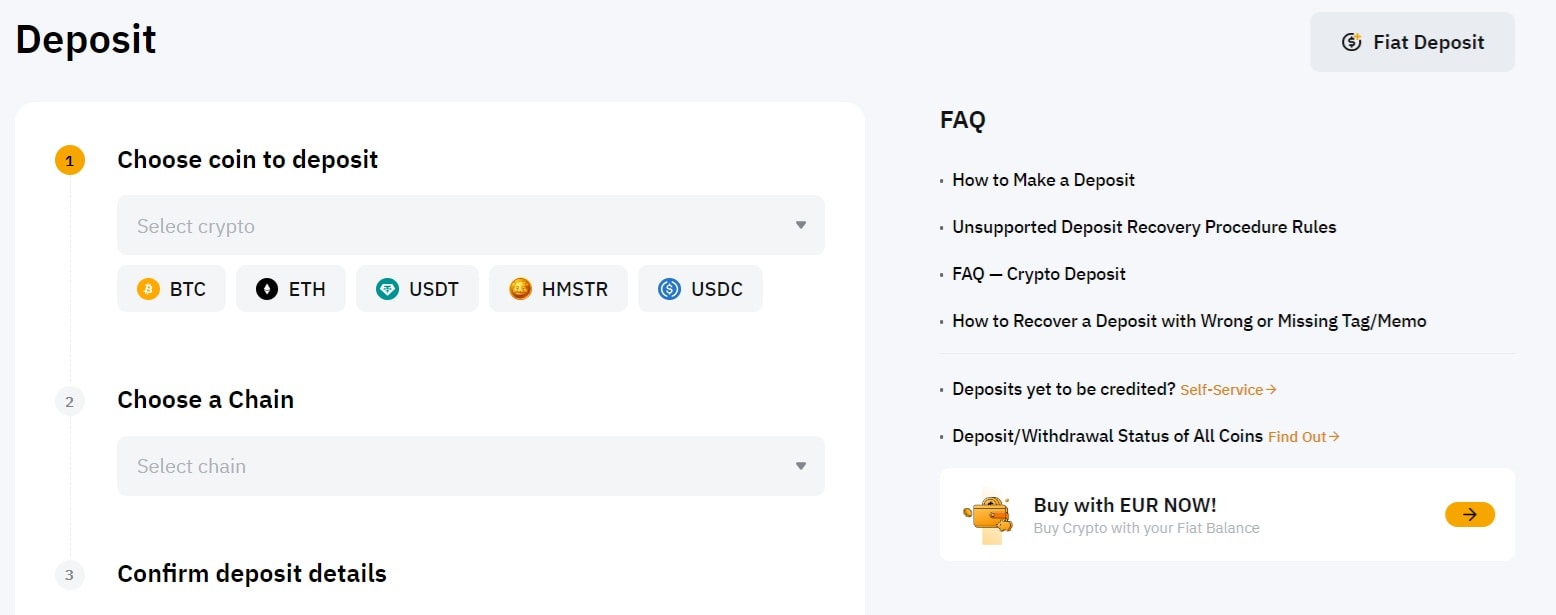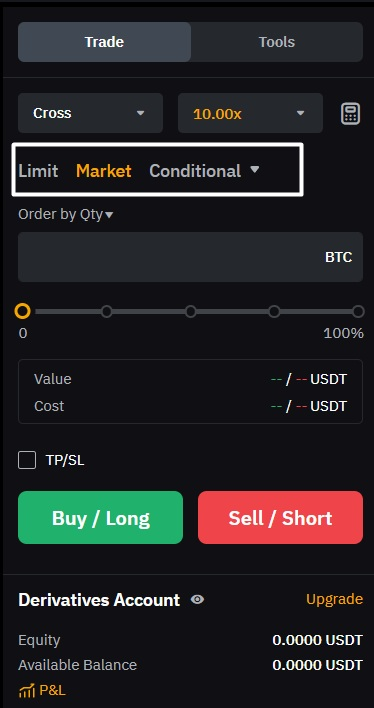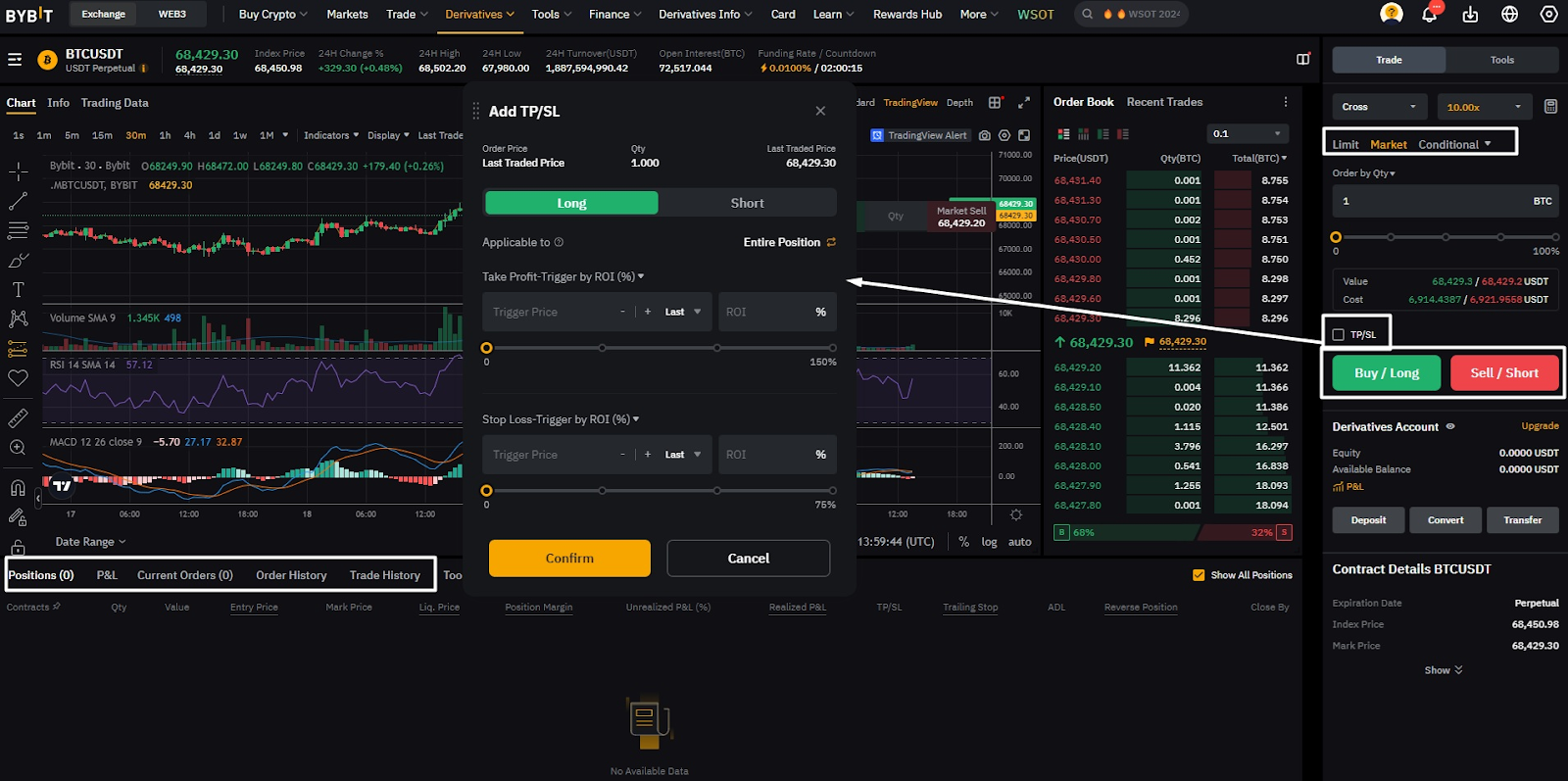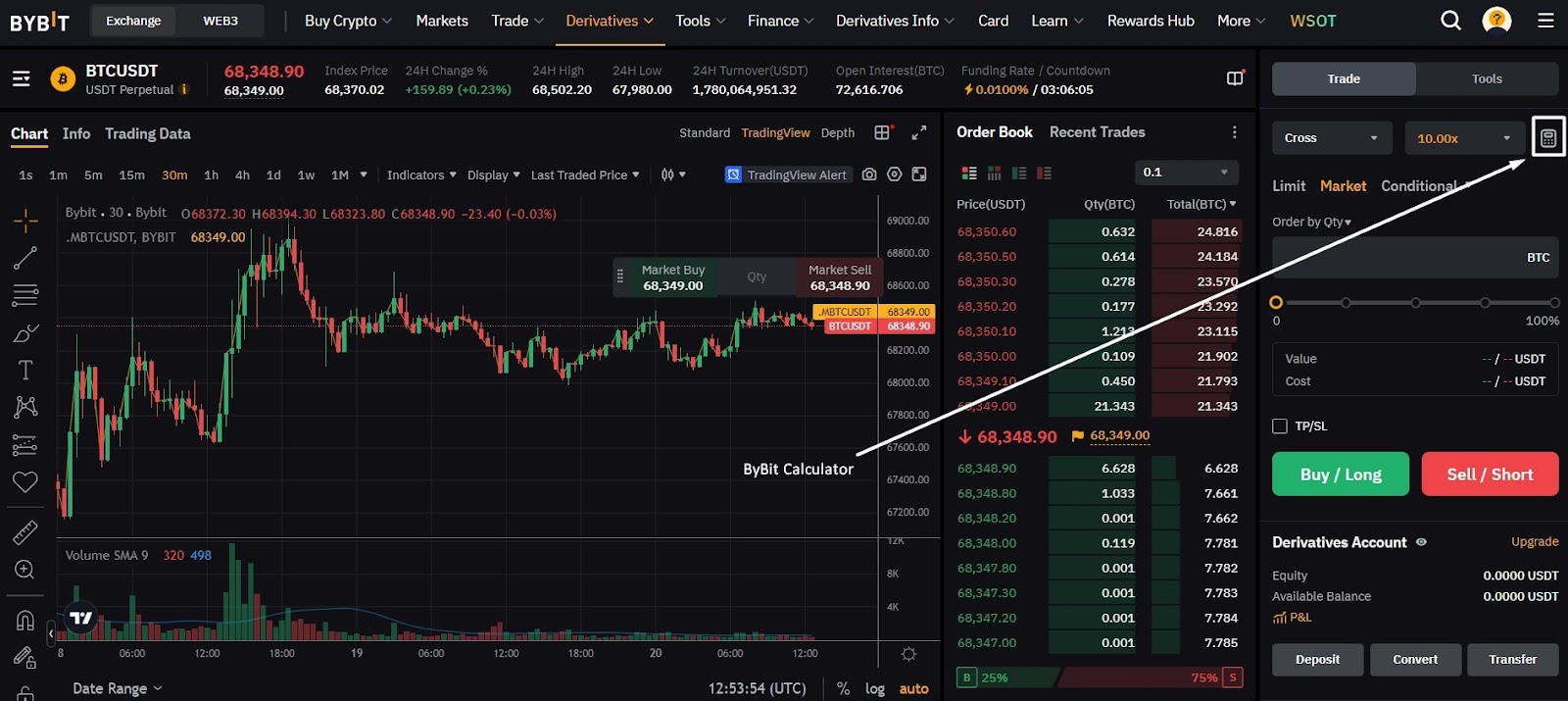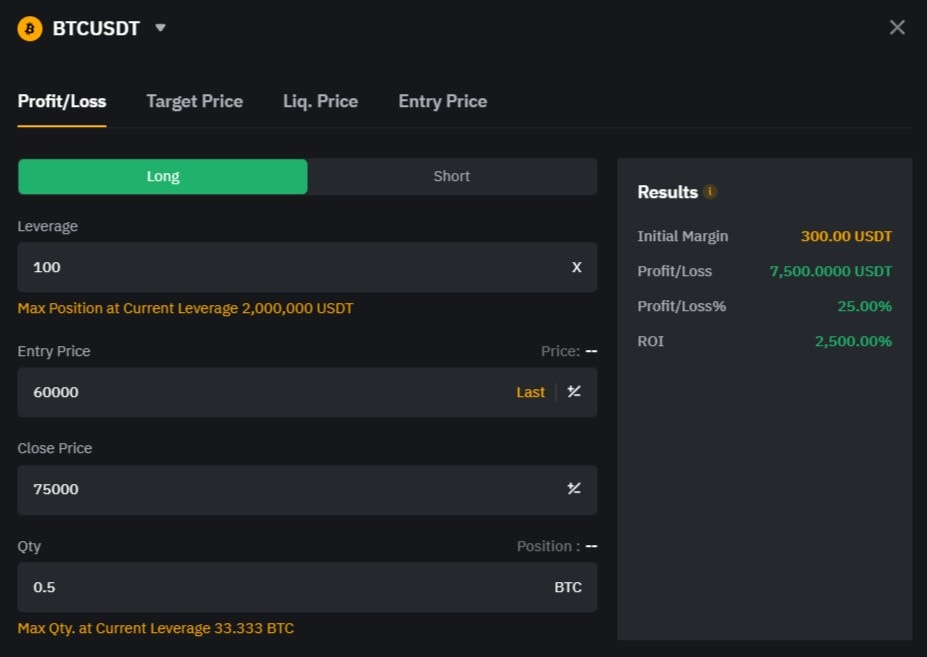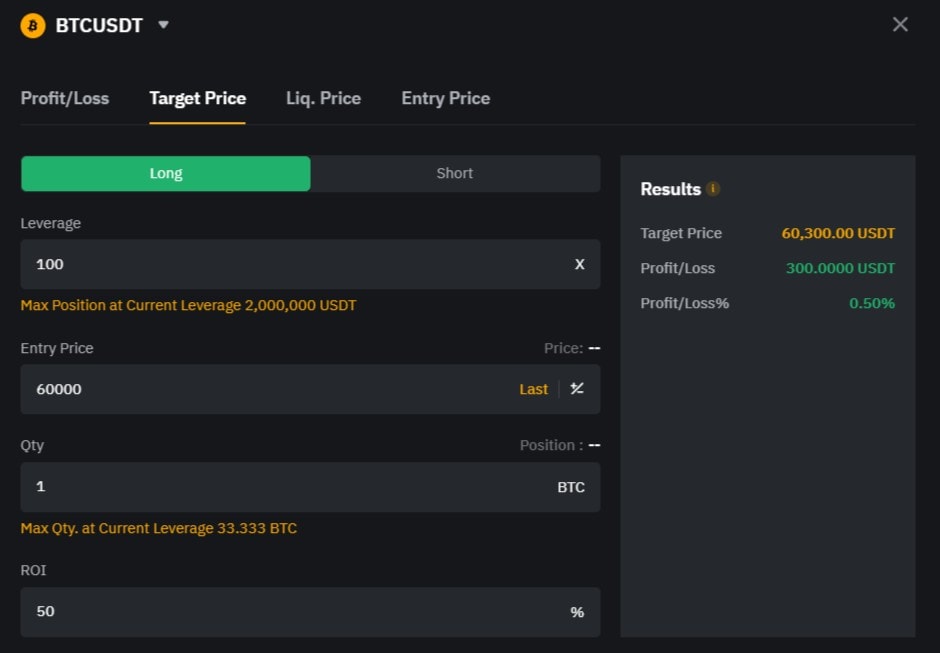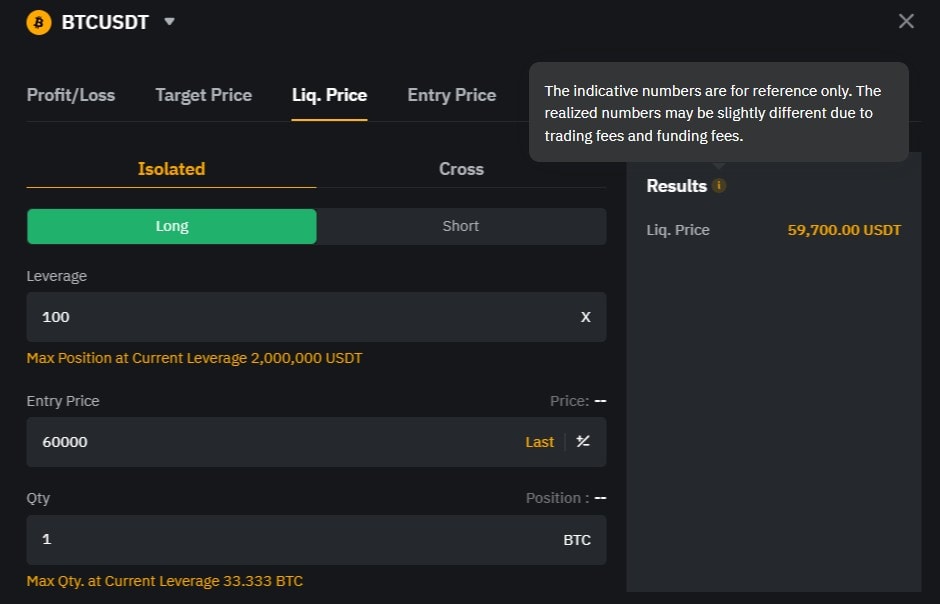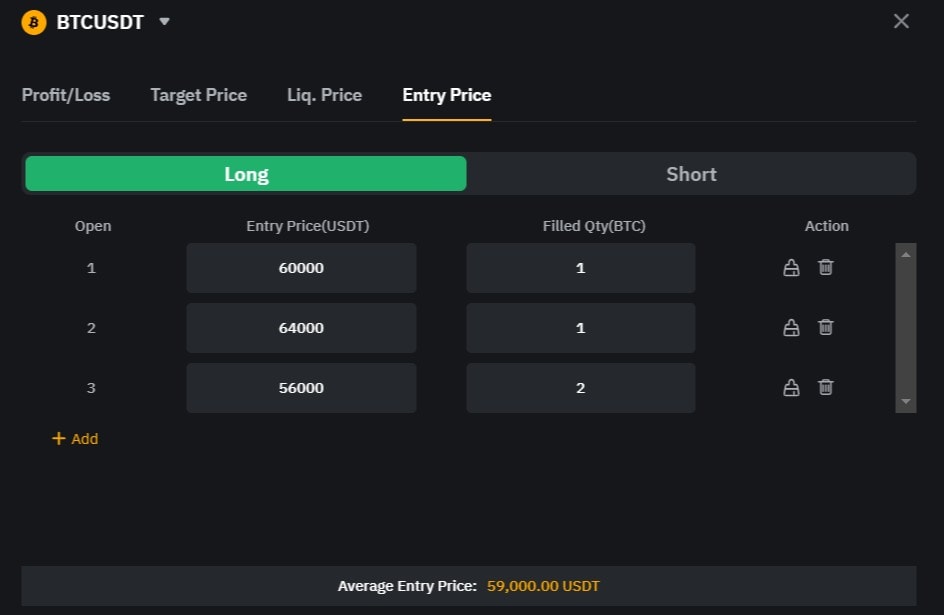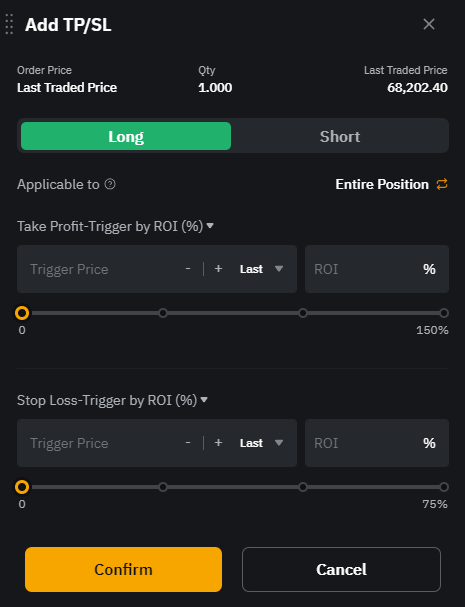How to Get Started With Bybit Crypto Perpetual Derivatives Trading
Perpetual futures contracts have become a popular choice among cryptocurrency traders, offering flexibility and unique features as compared to traditional futures. Bybit’s cryptocurrency exchange provides the tools and resources necessary to get started with crypto perpetuals trading. Traders can easily select their desired trading pair on Bybit's platform, enhancing their trading experience.
Key Takeaways:
No Expiration Date: Unlike traditional futures, perpetual contracts have no expiration date, allowing traders to hold positions as long as they maintain sufficient margin requirements.
Flexible Trading Strategies: Traders can capitalize on market movements without needing to close or settle contracts at set intervals, enhancing long-term strategies.
Growing Popularity: Perpetual futures are gaining traction due to their flexibility, risk management options and high leverage potential, attracting both new and experienced traders.
What Are Crypto Perpetual Futures Contracts?
Crypto perpetual futures contracts are derivatives that allow traders to speculate on the price movements of assets such as Bitcoin or Ethereum without a set expiration date.
Unlike traditional futures contracts, which involve an agreement to buy or sell an asset at a predetermined price on a specific date, perpetual futures don’t have a set expiration date. Perpetual futures can be held indefinitely, as long as margin requirements are met.
Bybit offers linear perpetual contracts with USDT and USDC as collateral. Bybit also offers inverse perpetuals, with the underlying asset (for example, BTC) as collateral.
Example: A 1 BTC contract in a BTCUSDT perpetual contract would yield a profit of 100 USDT if the price of BTC rises by $100. This straightforward calculation and flexible holding period make perpetual contracts a popular choice.
Key Differences From Traditional Futures Contracts
The main distinction between perpetual futures and traditional futures is the lack of a fixed settlement date. Traditional futures require periodic closures or rollovers, which can complicate long-term strategies. Standard futures contracts, like those offered on traditional exchanges, have fixed expiration and settlement dates, which can complicate long-term strategies. In contrast, perpetual futures allow you to hold positions indefinitely, maintaining flexibility.
Price Convergence: While traditional futures align with the spot price as they near expiration, perpetual futures use periodic funding rates to keep prices close to the spot value. Funding payments are exchanged between long and short positions based on market conditions, helping to maintain price stability.
Popularity of Crypto Perpetual Futures
Perpetual futures trading has become increasingly popular in crypto markets due to several key advantages:
Flexibility: Hold positions without worrying about expiration dates.
Leverage Options: Access high leverage to maximize potential returns.
Accessibility: Platforms like Bybit offer real-time data, user-friendly interfaces and robust risk management features.
Bybit's user-friendly trading interface allows traders to easily navigate and manage their positions, enhancing the overall trading experience.
The combination of these benefits makes perpetual futures appealing to both beginning and experienced traders, allowing them to enhance trading strategies and/or hedge risks effectively.
Perpetual Futures vs. Traditional Futures: Quick Scenario
Let’s take an example. John, a trader, expects Bitcoin’s price to rise from $30,000 to $35,000 over three months.
Traditional Futures: John selects a three-month contract. Upon expiration of the contract, he faces the risk of price convergence or additional fees in order to roll the contract over.
Perpetual Futures: On Bybit, John holds a BTCUSDT perpetual contract indefinitely, avoiding expiration constraints. He maintains his position as long as his margin is sufficient, allowing him to profit from the price increase without the limitations of traditional contracts.
How Perpetual Futures Trading Works
No Expiration Date and Implications
Since perpetual futures lack an expiration date, allowing traders to hold long or short positions indefinitely, this provides greater flexibility to adapt to market changes without needing to close contracts or roll them over.
For instance, traders on Bybit can maintain BTCUSDT perpetual contracts as long as they meet margin requirements, regardless of market volatility.
Funding Rate Mechanism
The funding rate mechanism keeps perpetual contract prices aligned with the spot price of the underlying asset. It involves periodic payments between traders, typically adjusted every eight hours, based on the difference between the contract price and the spot price.
Positive Funding Rate: Long traders pay short traders
Negative Funding Rate: Short traders pay long traders
The chart above displays the BTCUSDT perpetual contract on Bybit’s trading platform.
If a trader holds a $10,000 long position in BTCUSDT, and the funding rate is 0.0100%, the funding fee would be $1.00 (calculated as $10,000 × 0.0100%). This fee is paid to holders of short positions. Conversely, if the funding rate is negative, short traders would pay the fee to long traders.
Bybit’s platform displays real-time funding rates and countdowns to the next settlement, helping traders plan their positions effectively.
High Leverage, Risks and Benefits
Perpetual futures contracts on Bybit offer traders the opportunity to use high leverage, sometimes up to 100x. This means that with a relatively small margin, traders can control a much larger position.
For example, as shown in the image below, Bybit allows traders to select their preferred leverage level, ranging from 1x up to 100x, depending upon their risk tolerance and trading strategy.
Benefits of High Leverage
Amplified Returns: High leverage enables traders to potentially multiply their profits. For instance, with 100x leverage, a trader can open a $10,000 position with just $100 in margin.
Flexible Leverage Settings: Traders can adjust leverage based on their strategy, or market conditions. The image below illustrates the leverage adjustment option, whereby users can slide to choose a leverage level and view the maximum position size at the current leverage.
Risks of High Leverage:
Increased Risk of Liquidation: Higher leverage increases the risk of rapid margin depletion and potential liquidation of positions. The image above also highlights a warning message, indicating that a high leverage setting increases the risk of immediate liquidation.
Need for Risk Management: Traders must employ robust risk management strategies, such as setting stop losses, monitoring market conditions and choosing leverage levels responsibly.
Margin Requirements for Perpetual Positions
To maintain an open position in perpetual futures, traders must keep their margin balance above the required minimum, known as the maintenance margin. On Bybit, this requirement depends upon the size of the position and the leverage used.
Leverage Impact: Higher leverage lowers the initial margin needed, but increases liquidation risks.
Automatic Liquidation: If the margin falls below the maintenance level, Bybit automatically liquidates the position to prevent negative balances.
Key Calculations
Average Entry Price (AEP): Reflects the average price paid for a position.
Formula: AEP = Total contract value ÷ Total quantity of contracts
Example: If a trader holds 0.5 BTC at $5,000 and buys 0.3 BTC at $6,000, the new AEP is $5,375.
Profit & Loss (P&L) Calculations:
Unrealized P&L:
Long Formula: Qty × (Last Price − Entry Price)
Short Formula: Qty × (Entry Price − Last Price)
Example: With an entry price of $7,000 and a last price of $7,500, a 0.2 BTC long position yields an unrealized P&L of 100 USDT.
Closed P&L: Accounts for all fees when closing a position
Formula: Position P&L − Fees = Closed P&L
Last Traded Price: The last traded price is crucial for calculating realized profits and losses, as it reflects the most recent price at which a contract was executed.
Takeaway: Traders should monitor their margin and leverage in order to accurately track their P&L and avoid liquidation.
For details on P&L calculation, refer to the section on Margin Requirements and P&L Calculations.
Bybit’s platform shows real-time data for P&L, margin balance and leverage. Understanding how these figures are calculated helps traders make informed decisions. For example, knowing the unrealized P&L formula lets traders anticipate how price changes impact their positions.
How to Trade Perpetual Futures on Bybit: Step-by-Step Guide
Bybit offers a user-friendly and feature-rich trading platform designed for both beginning and experienced traders. It provides real-time market data, advanced charting tools and a range of order types, enabling traders to make informed decisions.
Sign up on Bybit and Complete the KYC Verification
Signing up on PC/Desktop
To sign up on PC/Desktop, follow the steps below.
Visit Bybit’s Website: Go to the Bybit website and click on the Sign Up button located at the top right corner of the page.
Choose Your Method: Select whether you want to sign up with your email address or mobile number.
Enter Your Details: Input the necessary details, such as your email address and password, or your mobile number and password.
Create Your Account: Click on the Create Account button after reading and agreeing to Bybit’s Terms of Service and Privacy Policy.
Verification: Complete the reCAPTCHA verification, and enter the verification code received via email or SMS.
Signing up on Mobile
To sign up on mobile, follow the steps below.
Download the App: Download the official Bybit App from the Apple App Store or Google Play Store.
Launch the App: Open the Bybit App and tap on the Sign Up button located at the top right corner of the screen.
Choose Your Method: Select whether you want to sign up with your email address or mobile number.
Enter Your Details: Input the necessary details, such as your email address and password, or your mobile number and password.
Create Your Account: Tap on the Sign Up button after reading and agreeing to Bybit’s Terms of Service and Privacy Policy.
Verification: Complete the reCAPTCHA verification and enter the verification code received via email or SMS.
Deposit Funds Easily With Fiat or Crypto Options
To deposit funds into your Unified Trading Account on Bybit, you can use two methods, as follows.
Fiat Deposit: Deposit EUR or other fiat currencies using SEPA, Easy Bank Payment or other available payment methods.
Crypto Deposit: Choose from supported cryptocurrencies, such as USDT, BTC or ETH, and select a chain to complete your deposit.
This provides flexibility for users to fund their accounts easily.
Manage Orders: Place, Adjust or Close Trades
- Place an Order: Select a trading pair on the trading page (e.g., BTCUSDT) and choose your order type — market, limit or conditional.
Market Order: Executes immediately at the current market price
Limit Order: Executes at your specified price
Conditional Order: Executes when set conditions are met
2. Adjust Margin: Modify the margin by increasing or decreasing the allocated funds to manage risk or leverage.
3. Check the Mark Price: Monitor this key price indicator to avoid liquidation risks.
4. Cancel an Order: Navigate to the Order tab to cancel any open orders as needed.
5. Close a Position: When you're ready, select Close and confirm to secure your gains or limit losses.
6. Use TP/SL: Set Take Profit/Stop Loss orders to automatically trigger based on your ROI (return on investment) preferences (as shown in the image). This helps manage your trades proactively.
How to Use Bybit’s Position Calculator to Open Perp Positions
Bybit’s Position Calculator helps traders estimate key values, such as profit/loss, target price, liquidation price and entry price to manage their positions effectively. To use the Position Calculator, follow the steps below.
Access the Calculator: Click on the calculator icon on the trading page.
1. Calculate Profit/Loss: Enter your entry price, closing price, quantity and leverage. For instance, with an entry price of $60,000, a close price of $75,000 and 0.5 BTC at 100x leverage, your estimated profit would be $7,500.
2. Determine Target Price: Set your entry price, quantity and ROI to find an optimal target price. For example, an entry price of $60,000 with a 50% ROI gives a target price of $60,300.
3. Determine Liquidation Price:
Input your leverage, entry price and position size to see the estimated liquidation price. For example, using 100x leverage with an entry price of $60,000 shows a liquidation price of about $59,700 USDT, accounting for fees.
4. Calculate Entry Price:
Input multiple entry prices and quantities to find your average entry price. For example, if you enter prices of $60,000, $64,000 and $56,000 with different quantities, the average entry price would be $59,000 USDT.
Pro Tip: Use the calculator regularly to refine your trading strategy and manage risks effectively.
Key Features and Benefits of Trading on Bybit
Bybit offers the following trading features and benefits.
Competitive Fees & High Liquidity: Bybit offers competitive trading fees, with taker fees starting at 0.055% and maker fees as low as 0.02% for perpetual contracts.
Advanced Risk Management: Bybit’s platform offers tools such as stop-loss and take-profit orders to manage exposure.
Secure Environment: Bybit’s platform features multi-signature wallets and industry-standard security protocols to protect assets.
Trading Strategies for Crypto Perpetual Futures
Technical and Fundamental Analysis
Technical Analysis: Traders analyze price charts to spot patterns or indicators suggesting potential market movements. Popular tools include the tools below.
Moving Averages: Identify trends by smoothing price data over a set period.
RSI (Relative Strength Index): Gauge market momentum and overbought/oversold conditions.
MACD (Moving Average Convergence Divergence): Signal possible trend reversals or continuations.
Fundamental Analysis: This approach involves assessing market trends, news and economic events in order to anticipate future price changes. Traders monitor developments such as regulations, technological upgrades and macroeconomic shifts.
Trading futures involves speculating on the price movements of underlying assets, allowing traders to leverage their positions and potentially maximize returns.
Hedging: Traders open an opposite position in perpetual futures to protect their existing crypto assets from price volatility. For instance, holding Bitcoin but anticipating a short-term drop can be hedged by opening a short position in BTC perpetual futures.
Arbitrage: This strategy exploits price differences between different markets. Traders can buy the asset in one market and simultaneously sell it in another to capture the price gap.
Understanding Margin Requirements and Risk Management
Initial Margin is the minimum amount needed to open a leveraged position. For example, if you want to open a $10,000 BTCUSDT position with 10x leverage, you need an initial margin of $1,000 USDT. This margin acts as collateral and allows traders to control larger positions with smaller capital.
Position Margin means the amount required to keep a position open. It changes with market conditions and leverage. For instance, if your leverage is 20x for a $10,000 trade, your position margin is 5% of the trade size, or $500 in USDT.
Maintenance Margin is the minimum balance needed to keep the position active. For instance, if the maintenance margin is 0.5% for your $10,000 position, you need at least $50 in USDT in your account. Falling below this level triggers liquidation.
Liquidation Price comes into play when your position automatically closes to prevent further losses. For example, if you open a BTCUSDT long position at $60,000 with 20x leverage, your liquidation price might be $59,000, depending upon market volatility and funding fees. If BTC reaches this price, the position will be closed automatically.
Bybit’s Risk Management Tools: Bybit provides essential tools, such as stop-loss orders and margin calculators, to help traders plan effectively. These features prevent excessive losses and help traders avoid liquidation during market swings.
Conclusion
Perpetual futures allow traders to speculate on asset prices without the limitations of expiration dates, providing flexibility and liquidity. However, they also come with significant risks.
Bybit’s trading platform combines essential risk management tools and clear margin requirements, empowering traders to strategically manage their positions and navigate market volatility with confidence.
Ready to start trading on Bybit? Create your account now and explore our flexible perpetual futures contracts.
#LearnWithBybit

